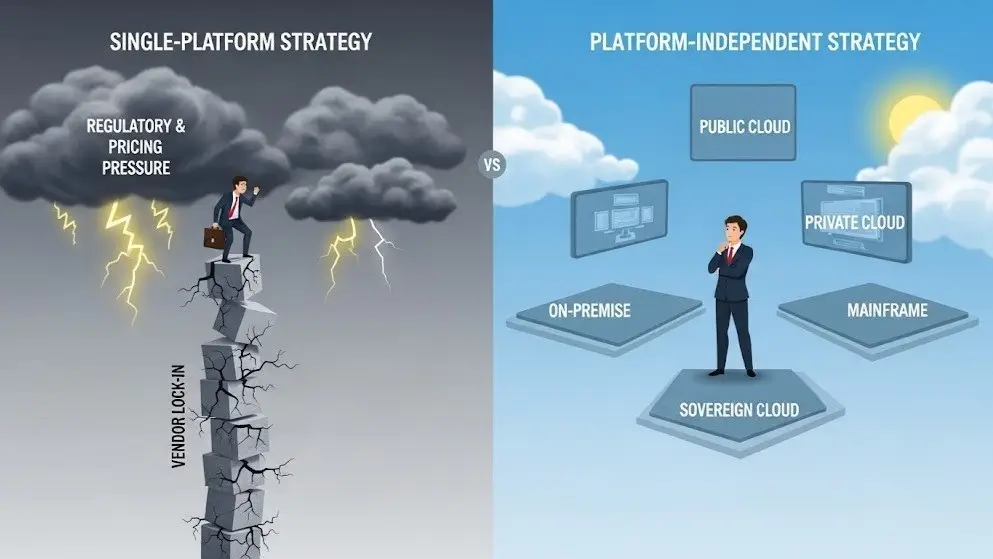Platform Independence: The Strategic Imperative The CSPs Won’t Tell You About
Introduction
AWS’s recent article defending the CLOUD Act reveals more than they intended. Hidden in their “five facts” is a business-critical admission that every CxO planning modernization needs to understand.
The Inadvertent Confession
AWS states they can “only respond to legal requests for data where we have the technical ability to do so.”
Translation: They do have technical ability to access your data in many cases. Their sovereignty claims depend entirely on their architecture decisions, not legal protections.
When Microsoft’s executive testified under oath that he “cannot guarantee” data sovereignty, he wasn’t making a legal argument—he was describing an architectural limitation that affects every customer.
The Real-World Evidence
The US/UK CLOUD Act agreement was supposed to solve sovereignty concerns. Instead:
- 20,000+ surveillance requests in two years (The Lawfare Institute, Richard Salgado)
- Demands for Apple to weaken encryption globally on all iPhone backups
- Bilateral agreements expanding rather than limiting jurisdictional reach
Meanwhile, Queen Mary University researchers analyzing hyperscaler sovereign clouds concluded customers are being sold services that are “sovereign in name only.” Even Microsoft-funded academic research confirms these sovereignty claims leave “key questions unanswered.” Click “Storm Cloud are Building: Surveillance, Sovereignty, and State Interests” to download the full paper.
AWS’s statistical claim of “no disclosures since 2020” becomes meaningless against this evidence of massive actual surveillance usage. Their predominant focus on law enforcement requests while completely ignoring FISA Section 702—the intelligence authority that enables secret data collection with broader scope and limited judicial review—reveals how conveniently incomplete their analysis really is.
The Business Risk You’re Not Calculating

Single-platform modernization creates three hidden risks:
- Regulatory Concentration Risk: Your vendor’s constraints become your constraints across 100% of operations.
- Negotiating Position Erosion: Exit costs become prohibitive. Pricing power shifts entirely to your vendor.
- Innovation Constraint: Vendor architecture decisions determine your compliance options.
The Platform Independence Alternative
Smart modernization preserves optionality:
- Sensitive workloads on-premise or sovereign platforms (full control)
- Cost optimization through public cloud where appropriate
- Mission-critical systems on proven infrastructure (IBM Z)
- Regulatory compliance through jurisdictional flexibility
Each workload deployed where it performs best—economically, technically, and legally.
The Competitive Advantage
While competitors lock into single platforms, independence creates sustainable advantages:
- Cost optimization through workload-specific deployment
- Regulatory agility without architectural redesign
- Vendor negotiating power through preserved optionality
- Innovation speed based on business merit, not platform availability
The Heirloom Approach
We don’t sell infrastructure—we optimize business outcomes. Our modernization starts with your business requirements, not vendor capabilities.
Sometimes that means the public cloud. Other times it’s on-premise deployment or on IBM Z. Often hybrid architecture that optimizes each component for its specific role.
We’re platform-agnostic by design because your business flexibility matters more than vendor convenience.
The Bottom Line
Recent developments prove sovereignty agreements don’t solve the core problem—they expand it. Platform independence isn’t just about compliance—it’s about business resilience when bilateral agreements fail to contain regulatory overreach.
Your future flexibility depends on the architectural decisions you make today.


